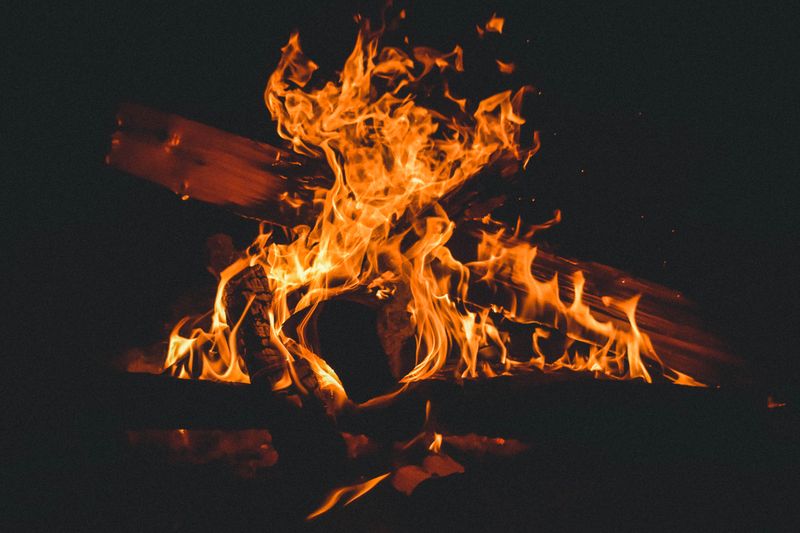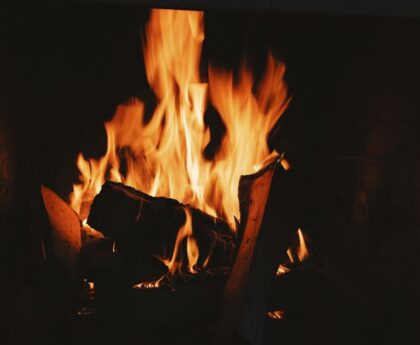Evacuation Orders Issued for Adams Lake and North Shuswap Communities
Update: August 18, 2023 – 3:45 PM
As the Lower East Adams Lake fire rages out of control, evacuation orders have been issued for Scotch Creek, Lee Creek, and several other communities in the Adams Lake and North Shuswap regions. The Thompson-Nicola Regional District (TNRD) and the Columbia-Shuswap Regional District (CSRD) have taken swift action to ensure the safety of residents in the affected areas.
CSRD Evacuation Orders
The evacuation order in the CSRD covers 92 properties between 2597 and 2900 Rawson Road, including Dorian Bay, Woolford Point, and Enns Reach. Tsútswecw Provincial Park is also included in the evacuation order. Additionally, an evacuation alert has been issued for the Celista-area from 4651 Squilax-Anglemont Road east to Onyx Creek and 2933 Scotch-Lamberton FSR to the North. Some properties in the Celista-area were already under evacuation orders and alerts.
Residents in other North Shuswap communities such as St. Ives, Seymour Arm, and Anglemont have been advised to have enough resources to shelter in place for 72 hours, as an evacuation order could lead to the closure of the Squilax-Anglemont Road.
TNRD Evacuation Orders
The TNRD has issued an evacuation order for 75 properties due to the Bush Creek East and Lower East Adams Lake fires. These properties include addresses on Adams West FSR, Holding Road, and Rawson Road in the vicinity of McLeod Point. An additional 12 properties on Loakin-Bear Creek Road have also been placed under evacuation orders.
The TNRD has issued an evacuation alert for 26 properties in the Aylmer Lake area and near Little Shuswap Lake, close to Niskonlith Lake Park. Several other TNRD properties along the west shore of Adams Lake, in the Agate Bay area, and on Fadear Creek Road remain on evacuation alert at this time.
Safety Measures and Support Services
The BC Wildfire Service has attributed the issuance of evacuation orders to strong northerly winds that pushed the fires southward. As a result, firefighting crews have been pulled back to staging areas to ensure their safety.
Residents who have been ordered to evacuate in both the CSRD and TNRD are being directed to the reception centre at McArthur Island in Kamloops. They are also encouraged to register for Emergency Support Services to receive further assistance. If possible, individuals are urged to stay with friends or family during this time of crisis.
Editorial: Assessing the Wildfire Crisis
The recent wildfire outbreak in the Adams Lake and North Shuswap regions of British Columbia highlights the urgent need for effective disaster management and heightened preparedness measures. As climate change continues to drive more intense and frequent wildfires, it is imperative that governments at all levels prioritize proactive strategies to protect vulnerable communities.
The evacuation orders issued by the TNRD and CSRD demonstrate the commitment of local authorities to safeguard the lives and property of residents. However, the scale of these evacuations highlights the pressing challenges faced by emergency response teams in managing large-scale disasters.
While the primary focus during a wildfire crisis is rightly on ensuring immediate evacuation and containment, it is equally critical to examine the underlying factors contributing to the severity of these wildfires. Climate change, forest management practices, and human activities all play a role in exacerbating wildfire risks. Hence, a comprehensive approach that addresses these root causes is necessary to effectively mitigate future disasters.
Climate Change and Wildfires
The link between climate change and wildfires is well-established. Rising temperatures, prolonged droughts, and changing weather patterns create conditions conducive to the rapid spread of fires. As we witness these devastating events year after year, it becomes evident that adapting to a warming climate is no longer an option but a necessity.
Investing in strategies to reduce greenhouse gas emissions and transitioning to renewable energy sources are crucial steps in combating climate change. Additionally, promoting sustainable land management practices, such as controlled burns and selective logging, can help mitigate the risk of catastrophic wildfires.
Forest Management and Prevention
Proactive forest management is key to minimizing the risk of wildfires. This includes regular thinning of forests, removal of dead and diseased trees, and creating fire breaks. Collaborative efforts between government agencies, Indigenous communities, and forestry stakeholders are essential to effectively implement these practices.
Public education and awareness campaigns are equally important to ensure that individuals understand the dangers of irresponsible actions, such as careless campfires or improperly extinguished cigarettes. By fostering a culture of fire safety and promoting responsible behavior, we can significantly reduce the incidence of human-caused wildfires.
Advice: Staying Safe During a Wildfire
As wildfires continue to threaten communities across British Columbia, it is crucial for individuals to prioritize their safety and be prepared for potential evacuations. Here are some key measures to consider:
1. Stay Informed
Regularly monitor local news and official sources for updates on wildfires in your area. Follow the guidance provided by emergency management authorities and be prepared to take swift action if evacuation orders are issued.
2. Create an Emergency Kit
Prepare an emergency kit with essentials such as non-perishable food, water, medications, important documents, and a first aid kit. Keep the kit in an easily accessible location to grab in case of an evacuation.
3. Develop a Family Emergency Plan
Discuss and plan with your family or household members on how to communicate and where to meet in case of an evacuation. Assign roles and responsibilities to ensure everyone’s safety.
4. Protect Your Property
Clear dry leaves, debris, and flammable materials from around your property. Trim tree branches that are close to your house and ensure that your gutters and roof are clear of debris.
5. Be Fire-Safe
Avoid activities that could start a fire, such as lighting campfires or using fireworks, especially in areas vulnerable to wildfires. Follow local fire restrictions and guidelines to prevent accidental ignitions.
By following these recommendations, individuals can play an active role in protecting themselves and their communities during the wildfire season. Ultimately, it is a collective effort that will lead us towards a safer future.

<< photo by Stephan Seeber >>
The image is for illustrative purposes only and does not depict the actual situation.
You might want to read !
- The Battle of the Blades: An In-Depth Look at Nottingham Forest vs. Sheffield United’s Anticipated Showdown
- Tragedy Strikes Broadway: Beloved Actor Chris Peluso Passes Away at 40
- India vs Ireland, 1st T20I: Rain Halts Ireland’s Battling Effort
- Kamloops Nature Parks and Trails Shuttered Again as Fire Hazard Escalates
- Amber Alert Activated: B.C. Mounties Launch Search for Missing Surrey Siblings, Aged 8 and …
- Breaking News: Bus Engulfed in Flames on Highway 16, Leaving Stranded Tourists in B.C.
- Star-Studded Affair: NHL’s Biggest Names Gather for Tyson Barrie’s BC Wedding
- Ross Moore Lake wildfire: A Burning Threat Expands to 2600 Hectares
- Massive Winds Fuel Explosive Run of Adams Lake Fire, Say Locals
- UPDATE: Lake Country Wildfires Prompt Evacuation Orders
- Crisis in Sept-Îles: Evacuation Orders Persist Despite Uncertainty
- Adams Lake wildfire: Battling against wind and rugged landscape, B.C. faces escalating challenge
- Tragedy Strikes: Emergency Response to Whitecourt, Alberta Crash
- Raging Inferno: Devastation Hits Gun Lake as Wildfire Scorches Properties
- Torrential Downpour Paralyzes Halifax: City Grapples with Extensive Flooding




